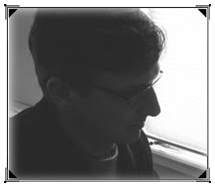Yesterday I racked two of the red wines and added SO2 to a third.
2007 Rancho Sarco Cabernet
The Rancho Sarco Cab went to a 20 L medium-toast Vernou French oak barrel and a 5 gallon carboy back on February 11. Since then I have topped it and maintained the SO2 more or less regularly.
The wine tastes and smells great: varietal, with a jammy edge and oak that is present but not overwhelming. It might be that this Cab could spend more time in barrel, but it is showing well now and I would like to get it in the bottle soon so Provina can show samples to interested parties. I racked it from barrel and carboy to a clean SS keg, and then to two clean 5 gallon carboys fit with fermentation locks. I hope to bottle it before the end of the month.
2007 Napa River Ranch Cabernet
The Napa River Ranch Cab went to a 20 L medium-plus-toast Vernou French oak barrel and a 5 gallon carboy back on March 11.
This wine has for several months shown a very closed-in aroma, with a bit of reduction – not sulfide, but a kind of post-fermentaion funk that is hard to describe but easy to recognize with experience. Back when I first put it to barrel I noted that it had not settled clear in the Pod. At the time I suggested that this was because I had not added any Lallzyme at the beginning of the ferment.
I believe that the undeveloped aroma is also a consequence of leaving out the enzyme. The Lallzyme preparations are predominantly cellulases and hemicellulases, but like all commercial enzme preparations there is some side-activity. Lallzyme shows a small glycosidase activity, which slightly – but noticibly – speeds the release of aromatic compounds.
Regardless of whether or not leaving out the enzyme was a good idea, the wine needed the racking I gave it yesterday. I also felt it would benefit from a bump in SO2.
I racked the wine from barrel and carboy to a SS keg, onto 2.5 grams of Efferbaktol granules dissolved in 50 mL of water – this gives about a 25 ppm addition of SO2.
A quick note on additions of sulfur dioxide: the wine always has some potential to bind some fraction of the added SO2. As a rule of thumb, I expect to actually see the free SO2 bump by about half of the calculated addition.
After stirring the wine in keg and settling a few minutes, I racked it to a 5 gallon carboy and the 20 L medium-toast barrel I had racked the Rancho Sarco Cab out of. I just like the aroma of the medium-toast barrel more than that of the medium-plus-toast barrel.
After the rack and add the aroma of the wine improved. The Napa River Ranch Cab is less jammy than the Rancho Sarco, and more fruity. It is lighter and leaner, with a marked "Rutherford dust" character.
2007 Roberts Road Pinot Noir
In my commercial winemaking I put Pinot Noir to barrel after the barest minimum of settling, and then never rack it until bottling. I'm hoping to get away with the same approach with the WinePod Pinot.
I pressed this Roberts Road Pinot and moved the wine to a 30 L medium-plus-toast Vernou French oak barrel and 3 gallon carboy on March 26. Recall the wine had some residual sugar at this point, and was re-inoculated in barrel on April 7. I confirmed that the wine was dry on May 2 and inoculated for ML on May 15.
I confirmed that the malolactic fermentation was complete (0.07 g/L) on July 8, and yesterday I added 7.5 g Efferbaktol granules (75 ppm SO2) distributed proportionally between the 30 L barrel and the 3 gallon carboy.
BTW - no evidence of fermentation in the Sangiocomo Chardonnay yet.
Tuesday, July 15, 2008
Subscribe to:
Post Comments (Atom)

2 comments:
John: minor typo; you pressed the pinot on March 26, not 17.
Thanks for the catch - corrected in the original.
Post a Comment